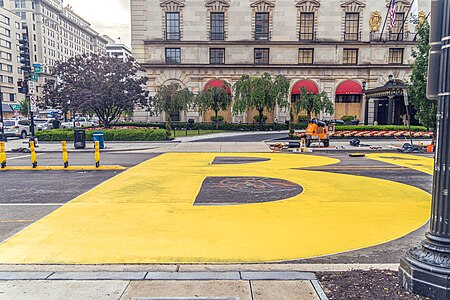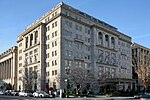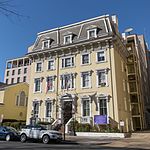Black Lives Matter Plaza
2020 establishments in Washington, D.C.AC with 0 elementsAfrican-American history of Washington, D.C.Black Lives Matter artDowntown (Washington, D.C.) ... and 6 more
George Floyd protests in Washington, D.C.Murals in Washington, D.C.Squares, plazas, and circles in Washington, D.C.Streets in Washington, D.C.Use American English from June 2020Use mdy dates from June 2020

Black Lives Matter Plaza (officially Black Lives Matter Plaza Northwest) is a two-block-long pedestrian section of 16th Street NW in Downtown Washington, D.C. The plaza was renamed by Mayor Muriel Bowser on June 5, 2020, after the Department of Public Works painted the words "Black Lives Matter" in 35-foot (11 m) yellow capital letters, along with the flag of Washington, D.C., during the series of George Floyd protests taking place in the city.
Excerpt from the Wikipedia article Black Lives Matter Plaza (License: CC BY-SA 3.0, Authors, Images).Black Lives Matter Plaza
Black Lives Matter Plaza Northwest, Washington
Geographical coordinates (GPS) Address Nearby Places Show on map
Geographical coordinates (GPS)
| Latitude | Longitude |
|---|---|
| N 38.900973888889 ° | E -77.036541111111 ° |
Address
Black Lives Matter
Black Lives Matter Plaza Northwest
20012 Washington
District of Columbia, United States
Open on Google Maps







